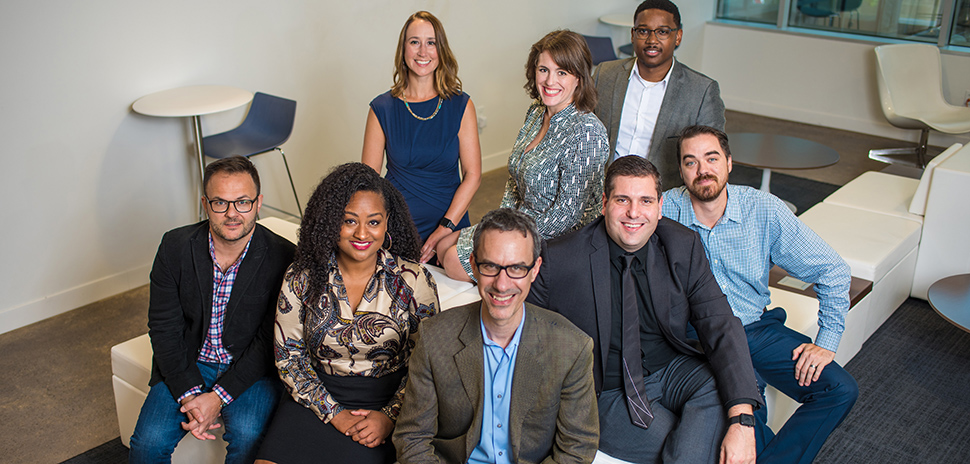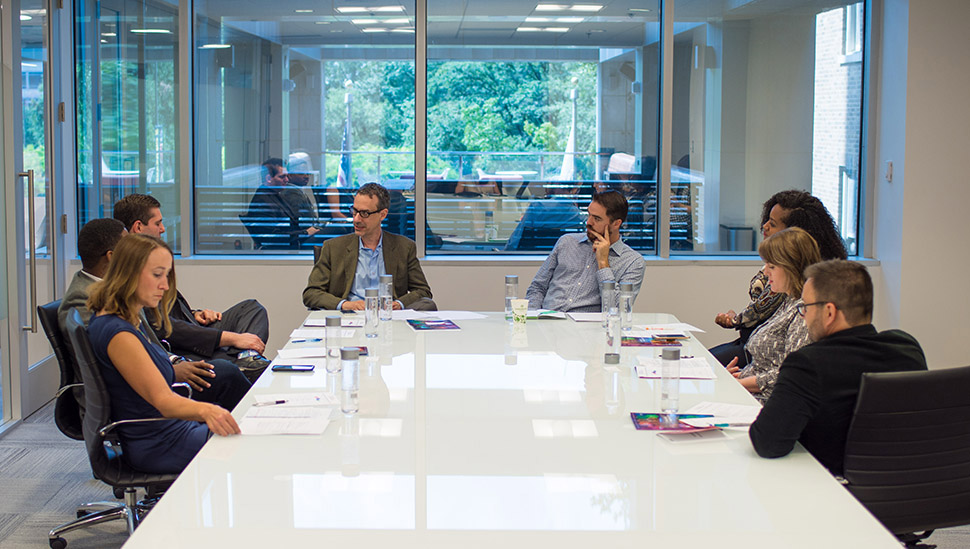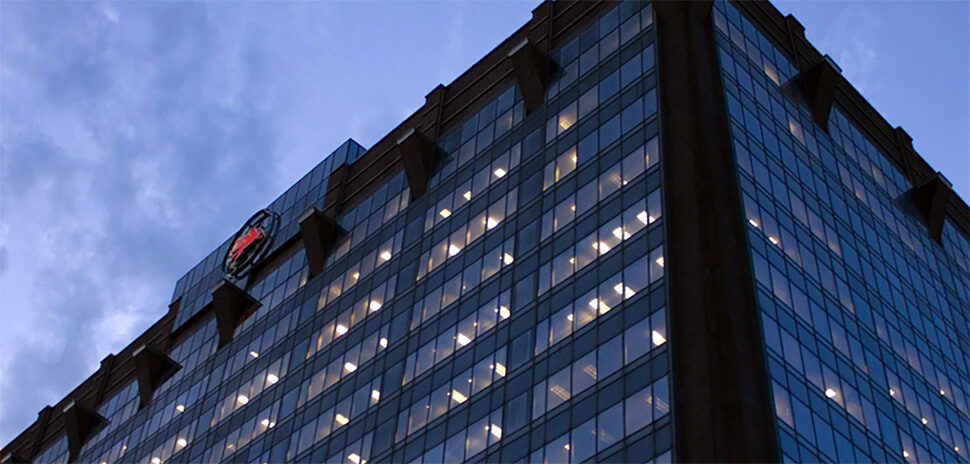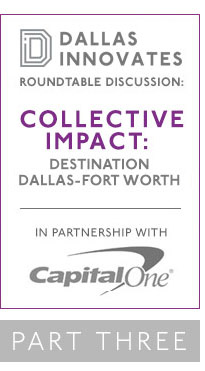 The Dallas Innovates “Collective Impact” roundtable brings together a variety of perspectives — from nonprofits to corporations to startups — to discuss the state of social innovation in the North Texas region and beyond.
The Dallas Innovates “Collective Impact” roundtable brings together a variety of perspectives — from nonprofits to corporations to startups — to discuss the state of social innovation in the North Texas region and beyond.
Our expert panel explores the concept of collective impact in social innovation, talks about the attraction of Dallas as a hub for impact, and asks how we can do more, better. The panel, moderated by Salah Boukadoum, ends with predictions of where things are heading. Boukadoum, as both a social entrepreneur and founder, is uniquely positioned to lead the discussion, as well as participate.
You were introduced to our panel and given a scope for their different perspectives in Part One. Then, our experts discussed how Dallas-Fort Worth may be a unique breeding ground for social good, what attracts talent for the sector, and common challenges for the region, in Part Two.
In our last installment, you’ll read about some of the trends impacting social good, the systemic issues that still need to be addressed, and some areas ripe for innovation. The discussion closes with a look into the future.
Meet the Experts
M O D E R A T O R
 SALAH BOUKADOUM
SALAH BOUKADOUM
Founder, Impact City Initiative; Co-founder, Good Returns Network; CEO, Soap Hope
Boukadoum is a social entrepreneur creating a wide scope of change across the Dallas-Fort Worth region. Boukadoum has created and leads numerous companies across North Texas, including social ventures, nonprofits, and impact organizations. His commentary piece, Dallas: The Impact City, published on Dallas Innovates in our inaugural year, is our most-read Voices article — ever. “My passion is social and economic innovation to empower all 7.5 billion of us,” Boukadoum says.
T H E P A N E L
 KATE KNIGHT
KATE KNIGHT
Director of Innovation, GroundFloor Project, United Way of Metropolitan Dallas
In Knight’s role, she oversees the GroundFloor program, United Way’s social innovation accelerator program that looks for solutions to social problems in the community around occupation, ability, and health. It provides support in terms of funding, mentoring, access to resources, and connections, to make that impact better, faster, and stronger. “I’m pleased to be sitting at this table with a couple of our fellows,” she says. “It’s good company.”
 MATT MYERS
MATT MYERS
Founder E-Capital Summit; Vice President, EarthX
EarthX is known as the ‘largest environmental experience’ as an international nonprofit showcasing the latest initiatives, discoveries, research, innovations, policies, and corporate practices reshaping the future. Myers is also the co-founder and executive director of the EarthX E-Capital summit (in Dallas April 25-28, 2019), which he calls “a tech investment summit focused on families and foundations.”
 MICHAEL THOMAS
MICHAEL THOMAS
Executive Director, My Possibilities
My Possibilities is a higher education and continued learning program for adults who have special needs. It also provides job placement, job support, and various services for individuals interested in entering the workforce. “Fun fact: Before the nonprofit, there was a thought that I wanted to be a classical pianist,” Thomas says. “I realized there were dudes like him [motioning to Moderator Salah Boukadoum, a former international concert pianist] who were out there, and that was a terrible career path.”
 BENJAMIN VANN
BENJAMIN VANN
Founder and CEO, Impact House
Impact House is a nonprofit business incubator and venture accelerator that connects, supports, and grows diverse entrepreneurs addressing industry inequities and disparities. Not only does it address the racial wage gap, but also provides the underrepresented access to coaching, curriculum, capital, and culture. “We ‘accelerate the best’ in all shades of genius,” Vann says.
 SARA VASSAR
SARA VASSAR
Senior Director, Digital Product Management, Capital One
Vassar is from the Capital One Garage, the company’s innovation lab in Dallas-Fort Worth. Her team is responsible for “building out the innovation muscle” at Capital One’s Plano office. “The team facilitates bringing products to market,” Vassar says, “and we are helping to do that better, faster, and cheaper.”
 STEVE WANTA
STEVE WANTA
Co-founder and CEO, Just
Just invests in low-income female entrepreneurs by providing capital and small loans, alongside coaching, to create more visibility in the community. “Our higher purpose is to create a more just world,” Wanta says, “Less stress, and more joy.” Just is based in Austin, but Wanta says because of United Way GroundFloor, they’ve chosen Dallas as the next destination to expand as part of a long-term vision to change the narrative.
 MICHELLE WILLIAMS
MICHELLE WILLIAMS
Executive Director, Southern Region, The Dallas Entrepreneur Center
A nonprofit organization driving innovation and economic impact, the Dallas Entrepreneur Center (DEC) is dedicated to helping entrepreneurs start, build, and grow their businesses. “I’m overseeing the launch of three locations in Oak Cliff, specifically one at Red Bird Mall, which I’m so excited about,” she says. True to her collaborative spirit, she adds, “There’s also Paul Quinn College and UNT Dallas to encourage entrepreneurship in higher education.”
Filling the gaps
SALAH BOUKADOUM: Let’s look toward what is coming. How can we build on — and improve — what we’ve already got for a starting point? Are there areas of impact that we are neglecting in the region that we need to pay more attention to?
BEN VANN: I’ll start first and talk about the diversity piece and the economic piece. There are definitely opportunities for Dallas, as I noted earlier in a Forbes statistic I use: [Investing in diversity could contribute] $3 billion to the economy. This is an opportunity for Dallas to rewrite its history. … We also have an opportunity from an innovation standpoint where corporations and capital meet philanthropy and the impact space. Social Venture Partners is really doing innovative work with how they’re engaging that impact and investing in those conversations. One of their top priorities is investing in people of color—their businesses and their ideas. How do we show the impact to investors? There has to be enough confidence to say, “This is a great business opportunity.” As an investor, that’s why you invest. But you can do it, and have a triple bottom line effect.
BOUKADOUM: Where are the holes you are not seeing people show up for? Holes that need to be filled?
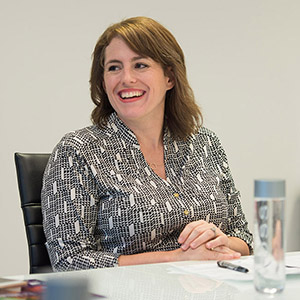
Kate Knight
KATE KNIGHT: There are four recurring themes that that are ripe for innovation: Child care, that’s a huge hole. Mental health, which is surely underserved in the community. Transportation. And affordable housing. These are not new niche topics. These are huge systemic issues that, ultimately, are going to have to be solved at that level, but I’d like to see innovation around these areas. I’d also like to see how we can get these services into the communities that are the most cut off.
MICHAEL THOMAS: Have you seen models outside of Dallas that inspire you in those areas?
KNIGHT: I’ve seen some cool ideas in child care. Some have dual-generation child care models. With the reality that there’s a ‘silver tsunami’ coming as our population ages, there’s an opportunity there. If you want to look at poverty and root causes, the early childhood piece is key. There’s a need to find a way to address that with resources. I’ve also seen some glimmers of ideas in transportation — even here in Dallas.
“There are four recurring themes that that are ripe for innovation: Child care, that’s a huge hole. Mental health, which is surely underserved in the community. Transportation. And affordable housing.”
KATE KNIGHT
THOMAS: Like Lime.
KNIGHT: The scooters are really fun. But I’m thinking about the idea of how you get people to work in communities that are not accessible to public transportation.
BOUKADOUM: Michael, what is missing in the Dallas ecosystem for you? What could really make a big difference for your impact?
THOMAS: Transportation is one of them, for sure. We’ve got a lot of crossovers. A lot of the same problems that exist on a regional level impact the people we serve dramatically. Unfortunately, our population isn’t one that can actually utilize ride-sharing systems. So, right off the bat, transportation at a regional level is an epic problem. We’re in a unique position where almost every service across the board is under-served for the special-needs population. It starts in the public schools. So, anytime you hear about public school funding — I get it, it’s bad — ultimately, that slice of the pie is also the last piece of that pie from day one, and it progresses through. There are a lot of people who need the support.
“Right off the bat, transportation at a regional level is an epic problem. We’re in a unique position where almost every service across the board is under-served for the special-needs population.”
MICHAEL THOMAS
BOUKADOUM: What do you think is a key missing piece that you would love to see arise in the region?
MATT MYERS: It’s been said, and repeated. Again, it’s transportation. But, a key part of that is density. … We need more businesses in Dallas that will supporting other businesses and services, which will then demand a more walkable and bikeable city. … That’s a city everybody wants to move to.
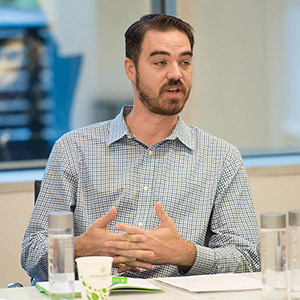
Michael Thomas
THOMAS: Devil’s advocate on this: It’s impossible to look back. Decisions that created our suburbs were made in the ’50s and ’60s in the Dallas area. And what we have now is a region in the best state in the country to do business. More businesses are moving here, and from the housing perspective and the school system and the space that’s available to bring them in, that looks to be northbound. That’s not just a Dallas issue. On the Fort Worth side, it’s moving to Keller. It’s northbound over there, too. But what we’re going to end up asking, “How far is Waco south of Dallas?” It’s an hour and a half. And [we’re] going to have a new hub there. It isn’t so much about getting everybody to be down in Dallas. … It should be more about how we connect our future hubs. That’s not going away. Your Dallas and Fort Worth, your Collin and Tarrant. Guess what? There will be room north of there 20 or 30 years from now. It about how they are connected
MYERS: Right, it’s not going away … I wish more was happening in Dallas. In terms of missing pieces, I have two more: Public education, because people are moving up to Plano and Frisco for the school systems. The second thing that’s [really important] is continuing to improve the education of women. If you read the draw-down for solutions for climate change, the number one thing you can do is empower women. Among the top 10 solutions for climate change is to include a focus on women’s education and family planning. If you combine those two things, it’s number one. So for me, if we can continue to focus on educating and empowering women in the city, that would make it a lot better place.
I’ll also say that I appreciate that we have three women at the table and two people of color. I just wish there was one less white male. Maybe I’ll duck out. We can then add one more person of color and have equal representation, which is almost here, which is fantastic. I know that was probably done purposefully.
STEVE WANTA: I haven’t been in Dallas long enough to say that anything is missing. But, I’ve come to appreciate that not everything is for everyone, and people have been very kind to us. United Way and the Impact City people have been great. I think our attitude [at Just] has been very important — how we bring ourselves to the table. If we’re going to be a part of Dallas, it needs to be about building relationships. … It’s a cool way to think about service and a nonprofit: Being a part of the community. Especially from one that comes from the outside. I went to a Women’s Tech event at The DEC that was sponsored by Capital One: It’s all a beautiful interconnected web here. It’s a refreshing thing for me to be experiencing a new community after being in Austin for almost 20 years.
“In the top 10 solutions for climate change is to focus on women’s education and family planning. If you combine the two it’s number one. So for me, if we can continue to focus on educating and empowering women in the city, that would make it a lot better place.”
MATT MYERS
BOUKADOUM: So, Sara and Michelle, from your very different perspectives of the big business organization and the young entrepreneurial business organization, what do you see businesses contributing to improve the outcomes of social innovation? What could businesses do—or what are they not looking at that they should be looking at?
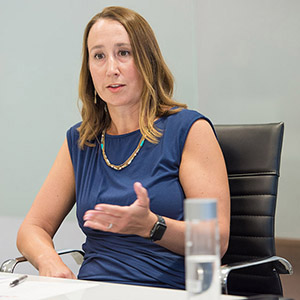
Sara Vassar
SARA VASSAR: Our focus through Future Edge has really been on education, going back to what you guys were talking about. It’s not just technology, but the access to technology. You can’t just learn during the day — then remember it and retain it and use it and practice it. You need support in the home and education for the parents on the questions they should be asking. What corporations can do is offer funding, but also training and curriculum for the things that they are great at. At Capital One, our associates are understood, valued and respected for their unique backgrounds, experiences, passions and perspectives. We know that to re-imagine money — to infuse ingenuity, simplicity and humanity into banking — we must harness the power of our collective wisdom. And it takes more than one entity to move the needle. If we can link arms together, we will achieve great things for our region.
MICHELLE WILLIAMS: I would love to see young businesses, as they start and grow, take a really intense look at the way they’re hiring and the way they’re interacting with the city as a whole. I think Dallas has a narrative problem. We need to talk about the schools, and say, “My son goes to the number-one high school in Dallas.” That does exist: It’s Townview, and it’s a public school right here in Dallas. Why don’t we talk about that? We need to talk about how Dallas just increased its score — tremendously — to be rated B, which is pretty damn good. We just don’t talk about those things. We also don’t talk about how the issue of racism factors in the way we view our city. But all of those things really impact the way businesses interact with our city. And it affects how investors interact with our businesses. It goes back to the kinds of questions that I always get asked on panels about what an entrepreneur should look like in the southern sector — which drives me insane. Because then you only get a microcosm of the narrative.
I’m asked about this all the time, and it’s a microaggression that I smile through and politely answer. There’s a narrative perspective in our city: If you’re uplifting people of color, they are always going to be poor, and they are always going to look like this. As somebody who is planting an entrepreneur center in Oak Cliff, I’m constantly pushing back on that: “Yes, this exists, but it also exists in North Dallas, and in Plano, and in Frisco.” The way we do business — and start business, should be more reflective on: What does my staff look like? Is my staff diverse? My board—is my board diverse? And if it’s not, then ask, “What am I going to do to change that?” Those are the things I wish our city was more intentional about. We offer that diversity. [Let’s ask]: “Did I fund three black and Latino businesses this year?”
But, those are not the questions that we often see asked. It’s, “Can I pat myself on the back because I’ve done my good?”
“The way we do business — and start business, should be more reflective on: What does my staff look like? Is my staff diverse? My board—is my board diverse? And if it’s not, then ask, ‘What am I going to do to change that?’“
MICHELLE WILLIAMS
VANN: I’ll quote Peter Drucker: Culture eats strategy for breakfast. I’d like to see a culture shift, specifically, because we’re in a technology phase. There’s a culture aspect that we’re just not up to speed on as people of color, right? The language talking about Venture Capital investments: What’s a convertible note? There’s an education piece that can involve culture and how we design our programs: How businesses reach out to the customer base. For example, I hate the radio. I rant about the radio…. You’ll listen to radio stations that target a specific audience and make a blanket statement of how they reach out to that audience. It’s pegged as a stereotype that people talk a certain way, etc. … If you dig into demographics there’s a vast difference — really, a beautiful differentiator between all the different types of people in that culture. Businesses are put blanket statements on how you reach the black community or how you reach the Latino community. I’d like to see a culture shift inside the wall. I think that includes what you’re talking about in terms of how you’re hiring, and [who you’re] working for, and who is getting the high level positions.
Most founders, if you’re a visionary or if you have the ability to motivate people, can outsource the talent. But, there’s a culture gap that says “Well, this isn’t for me, because the language doesn’t speak to me.” I think there’s a cultural gap across the board with business and technology. We’ve been able to make a difference and influence that with design thinking using hip hop. With kids, barriers were broken down because culturally they felt like they could relate to it. So, they were able to learn and actually contribute. They felt listened to and validated.
“I’ll quote Peter Drucker: Culture eats strategy for breakfast. I’d like to see the culture shift, specifically, because we’re in the technology phase.”
BENJAMIN VANN
Looking forward
BOUKADOUM: I want to give everybody a chance to weigh in on the most important passionate item that you don’t want to leave out. We talked about what we can do better, right now. Now, let’s talk about the future.
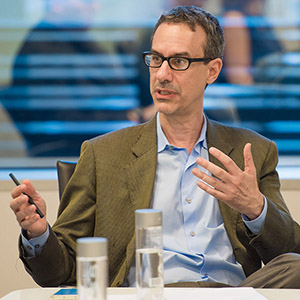
Salah Boukadoum
KNIGHT: In my dream, we are all trying to put ourselves out of a job. Isn’t that the point?
If we all put ourselves out of a job, that’s the goal. As far as sustainability, there is always going to be a tension between market forces, like we discussed. In a scenario where the beneficiary is different than the payer, there’s going to be some kind of tension. Ideally, we get to a place where folks are approaching solutions to social problems by looking at a variety of ways to make them a reality—not just as a business that’s turning revenue or as a charity that’s taking donations—but as a combination with a whole lot of different avenues. We’re working together, and folks are partnering in meaningful ways to solve problems. To me, that’s sustainability. And there’s also something that’s adaptable: If you can solve today’s problem, the implications will be a whole different issue for what we’ll deal with in the future. If we have a network of passionate people in the community who are working together and using a variety of different ways to drive impact, we can solve a host of our problems.
BOUKADOUM: Sara, you have a focus on looking at the future in technology and education. So, from your perspective, what does that look like?
VASSAR: Technology is rapidly changing the world around us, and with it, creating tremendous opportunity. Thinking back on the conversation around building relationships and partnerships, we have a collective responsibility, both corporations and nonprofits, to work together to figure out how to harness the power of technology to maximize reach and impact. The more our employees are involved with nonprofits and in social projects the more educated they are — they’re not isolated from the environment they’re about to impact with their innovation.
KNIGHT: I love that perspective from a corporate [citizen]. Do no harm. I think that’s very cool to have that as the fiber of your corporate sense of self.
“Technology is rapidly changing the world around us, and with it, creating tremendous opportunity. Thinking back on the conversation around building relationships and partnerships, we have a collective responsibility, both corporations and nonprofits, to work together to figure out how to harness the power of technology to maximize reach and impact.”
SARA VASSAR
BOUKADOUM: Michelle, a large focus of today is on technology and new innovation. How does that impact social innovation in your world?
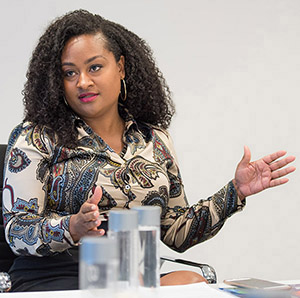
Michelle Williams
WILLIAMS: For the future of nonprofits, through that lens, I think a couple of different things: One of the things we’re trying to do in our entrepreneur center in Red Bird is to look at how we can merge entrepreneurship and education in a way that doesn’t perpetuate more inequity in the future. In funding, we’ve seen a disproportionate inequity when it comes to tech entrepreneurship. Part of that is because there’s just not access to good education that allows people to get into those endeavors. If we’re passionate about empowering the total community, and we’re passionate about looking at the gaps that exist, we also have to be passionate about saying, “How do we as a nonprofit organization focus on building business? How do we make sure innovation keeps happening in our city? And how can we be passionate about filling those gaps?” One of the things that we’re passionate about launching into is problem-solving—while at the same time, creating opportunities for organic collisions to happen. Ideally, we would partner with an entity around tech education. And also look for the opportunity to say, “Now that you have this skill set, here are three ways that you can use it to start your own business.” We also look at tech enablement. There are long-standing businesses that have been really successful for 30, 40 years, but their books are being kept manually. How can we help them become tech-enabled so that they can focus on growing the business?
BOUKADOUM: Steve, how is tech being used to create a social impact through your platform?
WANTA: What we’re trying to solve is a human problem that we believe requires a human solution. Technology can be leveraged so we can have more human power. We know that the technology has to be relevant to the audience we’re serving. We have to be designed to meet people where they are at. I’ve come to realize that we want to design a pathway — not for the lowest common denominator of bringing people down to that lowest-based element — so people can continue to progress forward, better. For example, a lot of our entrepreneurs pay in cash. We have to figure out how to allow them to repay in cash — and encourage, and educate, and provide access to information so that they can make decisions that are expenses to operate in cash in the United States. We know that our clients, for the most part, have smartphones — yet text is the easiest thing for all of us, me included, to use. We try systematically to get out of people’s way. Oftentimes, it comes down to power and trust. So, everything we do is about trust — re-enforcing network and systems of trust — and turning over the power to the community. Technology can help us do that.
“Technology can be leveraged so we can have more human power. We know that the tech has to be relevant to the audience we are serving. We have to be designed to meet people where they are at.”
STEVE WANTA
THOMAS: My hope is that we work ourselves out of a job, too. I believe balance is a solution to almost everything. There’s the beauty of capitalism and the beauty of wanting to serve others — collectively trying to find a way to work together. I hope the nonprofit sector finds a way to access capital — capital for somebody who wants to serve a need and has a great idea. Every time I see an article about some 23-year-old who has a great idea and is making a ton of money — maybe there’s $15 million dollars in investment capital — I think, great for them. But, I also think: This person over here has an amazing idea to serve people in the community. And they need access to $15 million to get it started. In the nonprofit world, that’s called a capital campaign: You’re dependent on people who want to give you millions of dollars. It’s far easier to access people who want to invest and get a return. The nonprofits of the future, — they’re going to be sustainable. The nonprofits that are going to grow — and make a massive impact — are the ones that find a way to shift themselves into that middle-of-the-road to access both.
VANN: A lot of you have already spoken on the pieces that form the work that I do. So, I’ll go macro from a resource standpoint. Without the resources, none of us can do anything that we do. From a Dallas perspective, we need to let our resources breathe by attracting new and major resources — global resources. The need we have in North Texas can’t be solved by the philanthropy that we have or the amount of philanthropy that we have in our foundations.
THOMAS: Not even close.
VANN: If we’re really going to be successful, we have to be able to attract larger resources that [will] invest here and really put Dallas on the map from a macro level. That way, our local resources don’t feel like we’re all competing for the same dollars, the same relationships. Not to mention —it’s all about who you know. We get tied up in the politics of resources, right? Because there are no other resources outside of the ones that have been here for the longest. If we can have a way to transfer and tailor our resources for a specific need or area, and bring in other resources that allow us to have more of an impact here, we’ll be projecting out — and not so much internally. We are suffocating our community within that. I’m talking specifically about capital, because that’s what allows us to do the work that we do.
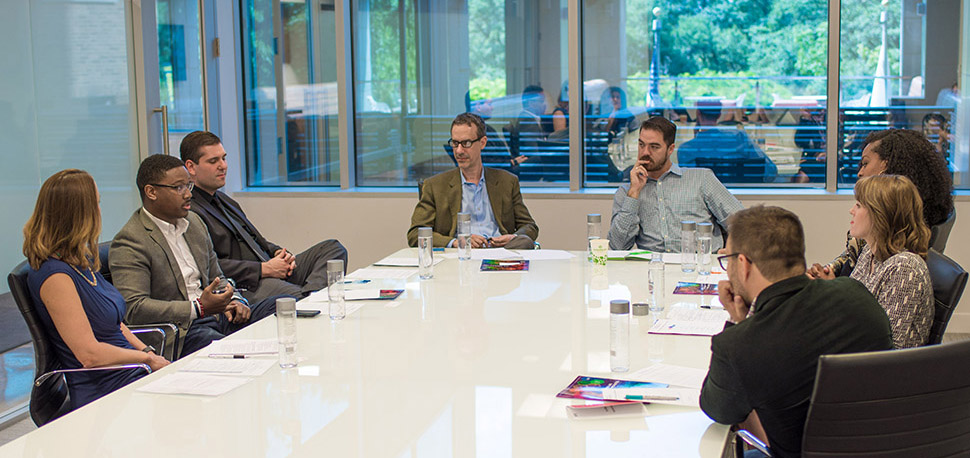
BOUKADOUM: I want to get one last comment from Matt on the future.
MYERS: The future…
KNIGHT: Nothing big.
MYERS: The world, the planet, is both literally and figuratively on fire right now, and there is an increasing concentration of wealth happening. What I see is a revolution taking place in the United States and globally. There is no question about it. My hope is that the revolution that’s taking place is a positive one. And the only way it could be a positive one is with community and collaboration. … I hope that I can collaborate here with all of you around the table. You know Dallas sits in a special position because it’s “purple” — it’s not Austin, but it’s not Houston. And it’s in the south, but we’re a red state. If Dallas can lead in this space, then that’s a huge, huge, huge impact.
“My hope is that the revolution that’s taking place is a positive one. And the only way it could be a positive one is with community and collaboration.”
MATT MYERS
I was in LA for a conference and it capped off with a quote from David Bowie that I really liked: “Tomorrow belongs to those who can hear it coming.” Well, I think that people here at this table hear it coming, and that’s why we’re doing what we’re doing.
The Collective Impact roundtable has been edited for brevity and clarity.
READ NEXT
COLLECTIVE IMPACT: DESTINATION DALLAS-FORT WORTH
A PANEL OF EXPERTS ON SOCIAL INNOVATION IN THE REGION
PART ONE
Collective Impact: Social Innovation in Dallas-Fort Worth
What makes Dallas-Fort Worth a destination for global impact work? Part One kicks off with eight thought leaders who explore what social innovation looks like from their unique perspectives — nonprofit, corporate, and startup — and how that is impacting the region.
PART TWO
Collective Impact: Making Dallas-Fort Worth a Hub for Social Innovation
What makes North Texas a place—or a potential place—for social innovation? In part two of our roundtable series, our experts discuss how Dallas-Fort Worth may be a unique breeding ground for social good, what attracts talent for the sector, and more.
Dallas Innovates, Every Day: Sign up for the enewsletter.










